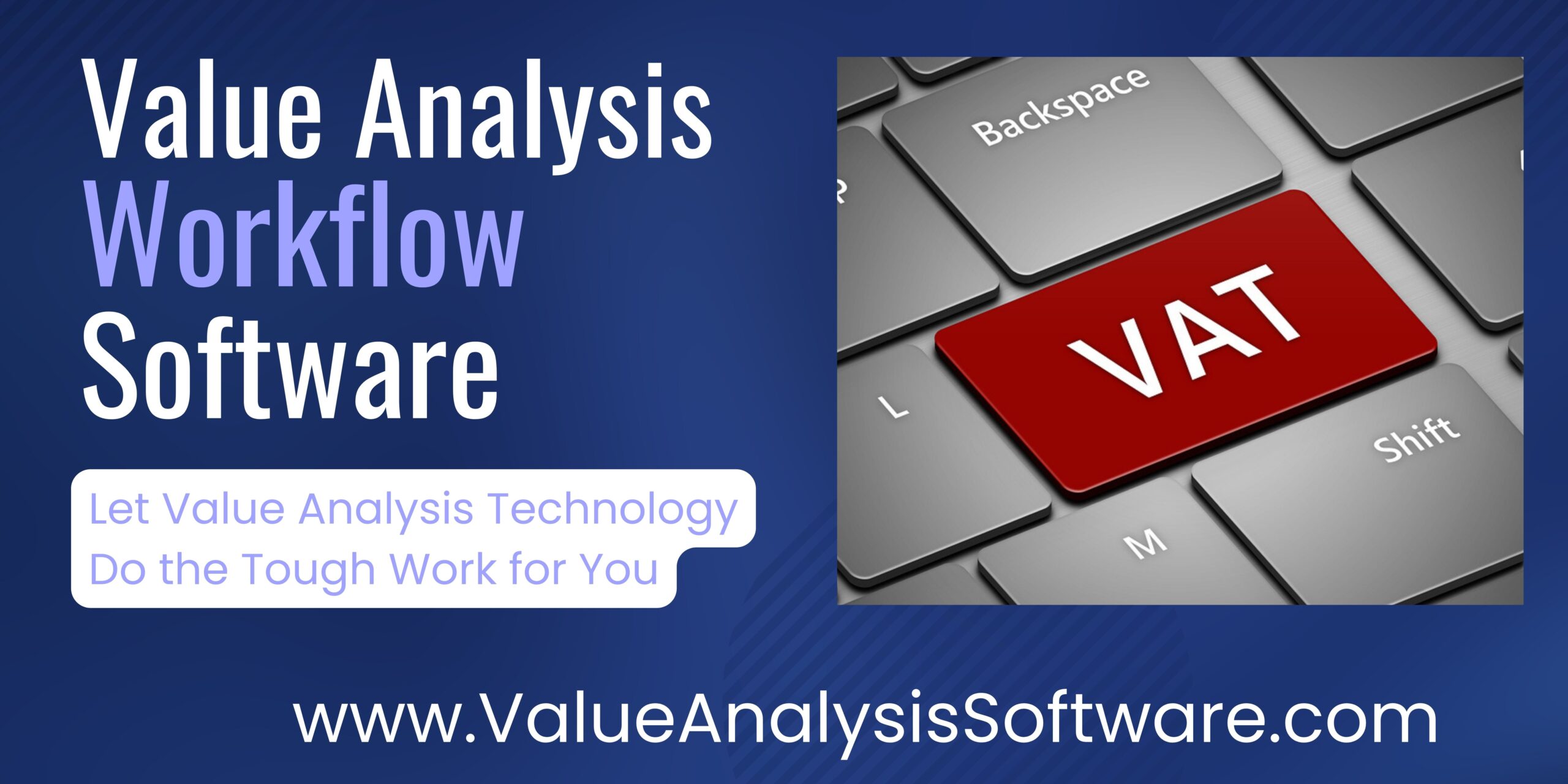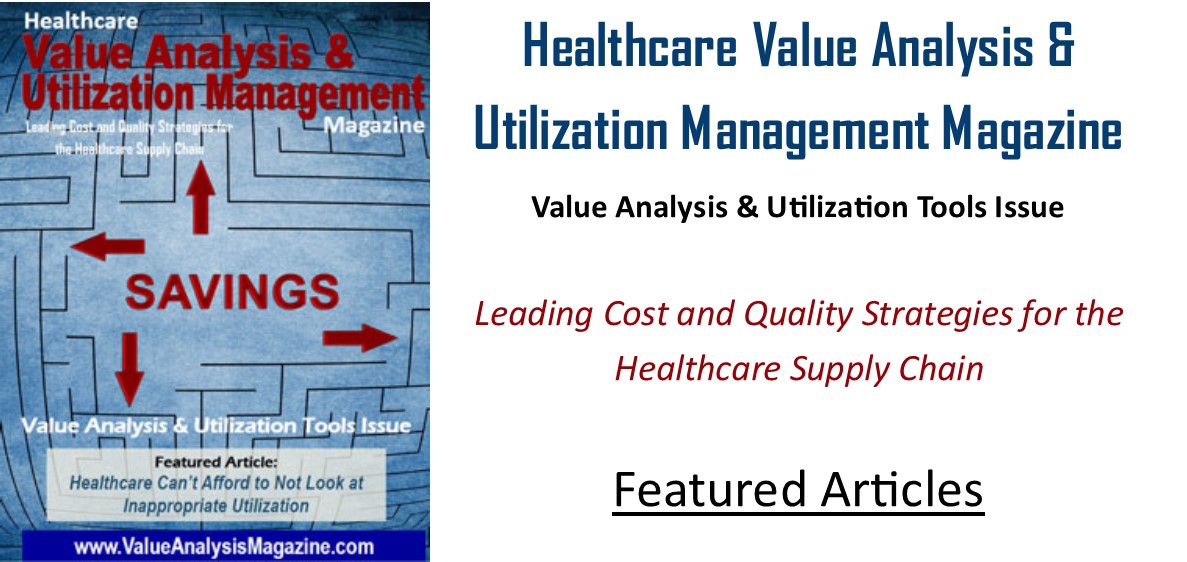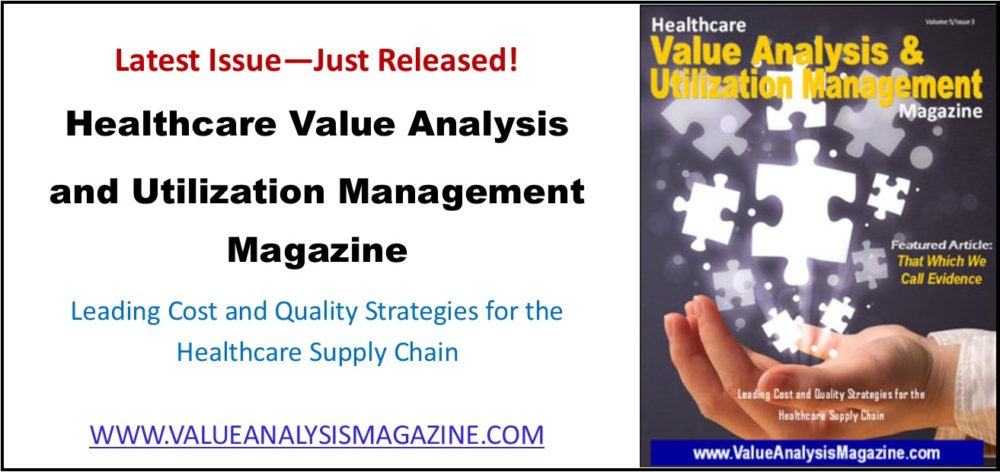“An effective value analysis dashboard will not only visualize data but also provide a roadmap with actionable insights.”
In today’s healthcare environment, value analysis (VA) teams face mounting pressure to balance ever-increasing costs with maintaining or improving clinical outcomes. To tackle this, value analysis teams rely on data and lots of it. Afterall, data is the cornerstone of any successful VA program. Collecting accurate and timely data lays the groundwork for evidence-based decisions. Without data, teams cannot identify trends, benchmark performance, or measure the impact of their initiatives. However, data alone is not enough. When improperly organized or presented, it can overwhelm stakeholders or lead to analysis paralysis. To extract meaningful insights, data must be contextualized and organized into tools that promote clarity and action. Dashboards serve an important role in this process, and they can elevate efforts to drive sustainable, impactful change. An effective dashboard will not only visualize data but also provide a roadmap with actionable insights.
A well-built dashboard is a powerful tool for real-time or near real-time monitoring of key performance indicators (KPIs). It provides a snapshot of performance, allowing teams to quickly identify successes and areas needing intervention. Dashboards are highly visual, often featuring charts, graphs, and filters that allow users to drill down into specific data points. Key benefits of dashboards include:
- Real-Time/Near-Time Monitoring: Teams can track ongoing performance and quickly respond to deviations or emerging trends. Dashboards are ideal for monitoring real-time or short-term performance.
- Custom Views for Stakeholders: Dashboards prioritize visualization and quick insights. They can be tailored to meet the needs of different audiences from VA to supply chain to clinical leaders.
- Simplified Decision-Making: Visualizing complex data in an intuitive format accelerates understanding and action.
- Enhanced Collaboration: Dashboards provide a clear framework for evaluating success, ensuring all stakeholders are aligned and accountable. It encourages collaboration by presenting data that is easy to understand and relevant to diverse stakeholders. Dashboards enable real-time discussions.
- Proactive Problem-Solving: Dashboards’ real-time data empowers teams to act quickly on emerging issues, such as supply chain disruptions or budget overruns.
- Demonstrating ROI (Return on Investment): Dashboards provide tangible evidence of value analysis initiatives, making it easier to secure buy-in from leadership.
To maximize the impact of a dashboard, value analysis teams should define key metrics that align with organizational goals, such as infection rate reduction, cost savings, or patient/staff safety. Consistency and accuracy must be ensured by standardizing data sources and using reliable, unified information. Tools should be tailored to stakeholders by developing views that address the unique needs of different audiences. Finally, these dashboards should be regularly updated and iterated to remain relevant as organizational priorities evolve.
In value analysis, data is the foundation, but tools like dashboards transform it into actionable insights. Numerous third-party tools are available to unlock the potential of data, while more advanced organizations may opt to develop solutions on their own. By using dashboards for real-time monitoring, organizations can ensure their efforts drive meaningful and measurable improvements. This will not only enhance decision-making but also promote accountability, transparency, and collaboration across the organization. In an era where healthcare faces increasing complexity and financial pressures, investing in these tools is a critical step toward achieving sustainable success.
Article by:
Anne Marie Orlando, RN, MBA, RCIS, CVAHP, Senior Director, Clinical Programs at Blue.Point Supply Chain Solutions; Treasurer, Association of Healthcare Value Analysis Professionals
Anne Marie has been a critical care nurse for over 19 years with a leadership foundation in the Interventional Cardiology and Interventional Radiology space. During her supply chain tenure, Anne Marie held a dual role of Supply Chain and Clinical Resource Director where she operationalized many clinical initiatives while maintaining fiscal accountability. At the GPO level, Anne Marie served as the Director of Clinical Services for Yankee Alliance supporting member value analysis teams and their work with clinical utilization. Anne Marie is currently the Senior Director, Clinical Programs for Blue.Point Supply Chain Solutions supporting value analysis teams in the use of the Blue.Point platform focusing on aligning product utilization and standardization with evidence-based practice.
Articles you may like:
Achieving Clinical Value Objectives for a Complex Value Analysis Initiative





